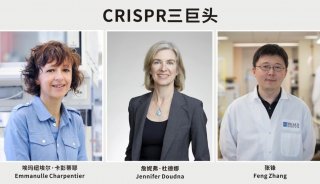用CRISPR/Cas9对CAR-T细胞进行多重基因编辑(二)
细胞系 Cell lines
The following CD19-expressing immortalized cell lines were used: Raji (Burkitt’s lymphoma cell line, ATCC-CCL86),Daudi (B lymphoblast cell line, ATCC-CCL213), and K562-CD19. Rajiffluc cells for bioluminescent imaging were generated by transfection of Raji cells with an expression cassette for firefly luciferase lentiviral particles from Genechem (Shanghai, China). To isolate a stable line expressing firefly luciferase (Raji-ffluc), transfected cells underwent puromycine selection and single cell cloning. K562-CD19 cells expressing CD19 were prepared by lentiviral transfection of K562 cells (human erythroleukemic cell line, ATCC-CCL243) with an expression cassette for CD19. The cDNA for full-length CD19 derived from Daudi cells was cloned into the FUW lentiviral backbone. Lentivirus-containing supernatant was prepared and K562 cells were transduced with this supernatant and then CD19-expressing cells were sorted by flow cytometry (MoFlo XDP, Beckman Coulter Inc) and underwent single cell cloning to obtain a population of K562 cells that uniformly expressed high levels of CD19. All above cell lines were maintained in RPMI1640 medium (ThermoFisher Scientific). Lentiviral producer cell lines 293T (ATCC-CRL3216)were maintained in DMEM (ThermoFisher Scientific). All media were supplemented with 10% (v/v) fetal bovine serum, 100 U/mL penicillin and streptomycin, 2 mM L-glutamine, and 1 mM sodium pyruvate. All cell lines were grown at 37 °C in a 5% CO2 atmosphere.
制备 CAR-T细胞 CAR-T generation
Second-generation CD19 CARs were constructed using single-chain variable fragment (scFv) derived from antibody clones FMC63, hinge and transmembrane regions from CD8α, intracellular domain from CD137, and intracellular domain from CD247 (CD3-zeta) [1]. The CAR sequence is followed in frame by the 2A ribosomal skipping sequence and eGFP sequence. The final CD19CAR-2A-eGFP was cloned into the FUW lentiviral vector backbone downstream from an EF1α promoter (Fuw-EF1α-CD19CAR-2A-eGFP). Lentiviruses were produced by cotransfecting 293T cells with Fuw-EF1α-CD19CAR-2A-eGFP and packaging plasmids pMD2.G, psPAX2 (addgen)using Lipofectamine3000 (ThermoFish Scientific). Virus supernatants were harvested on days 2 and 3 and concentrated by ultracentrifugation (Merck Millipore). UCBderived T cells were transduced with the supernatant and CAR+ T cells were identified by eGFP expression.
体外转录制备sgRNA Generating sgRNAs using in vitro transcription
We used oligonucleotides containing T7 promoter and 20bp targeting sequences as forward primer, and an sgRNA backbone reverse primer to amplify sgRNA-coding fragment using pX330 plasmid (Addgene plasmid #4223) as template. The T7-sgRNA PCR products were gel-purified and used as the template for IVT using MEGAshortscript T7 kit (ThermoFisher Scientific). RNAs were purified with MEGAclear columns (ThermoFisher Scientific) and eluted in RNase-free water.
制备TCR/B2M双敲除和TCR/B2M/PD-1三敲除的CAR-T细胞
Generation of TCR/B2M double knockout (DKO) and TCR/B2M/PD-1 triple knockout (TKO) CAR-T cells
Freshly purified primary T cells were activated for 3 days according to the procedure described above, and then transduced with lentiviral vectors harboring the CD19 CARs. Two days after transduction, CAR-T cells were electroporated with Cas9 protein (ThermoFisher Scientific) and the intended sgRNAs targeting the TCRα constant chain (TRAC), β2-microglobulin (B2M) exon1, andPD-1 exon1 by 4D-Nucleofector System N (Lonza) using the P3 Primary Cell 4D Nucleofector X Kit, V4XP-3024 (Lonza). Cas9:single-guide RNA ribonucleoproteins (Cas9RNPs) were prepared immediately before experiments by incubating Cas9 protein with sgRNA at a 1:1 ratio at room temperature for 10 min. 3×106 cells were washed twice with Dulbecco’s Phosphate Buffered Saline (DPBS, ThermoFisher Scientific) by centrifuging at 200g for 5 minutes and resuspended in 100 µL transfection buffer containing Cas9 RNP and then transferred into the electroporation cuvette. Program EO-115 was selected for high efficiency. After electroporation, cells were resuspended in 2 mL pre-warmed T cell medium and transferred into a 12-well cell plate and incubated at 37 °C in 5% CO2. The transfection efficiency was evaluated 3 and 7 days after electroporation. Cell culture medium was half replaced by fresh complete medium every 2 ~ 3 days.
-
焦点事件









